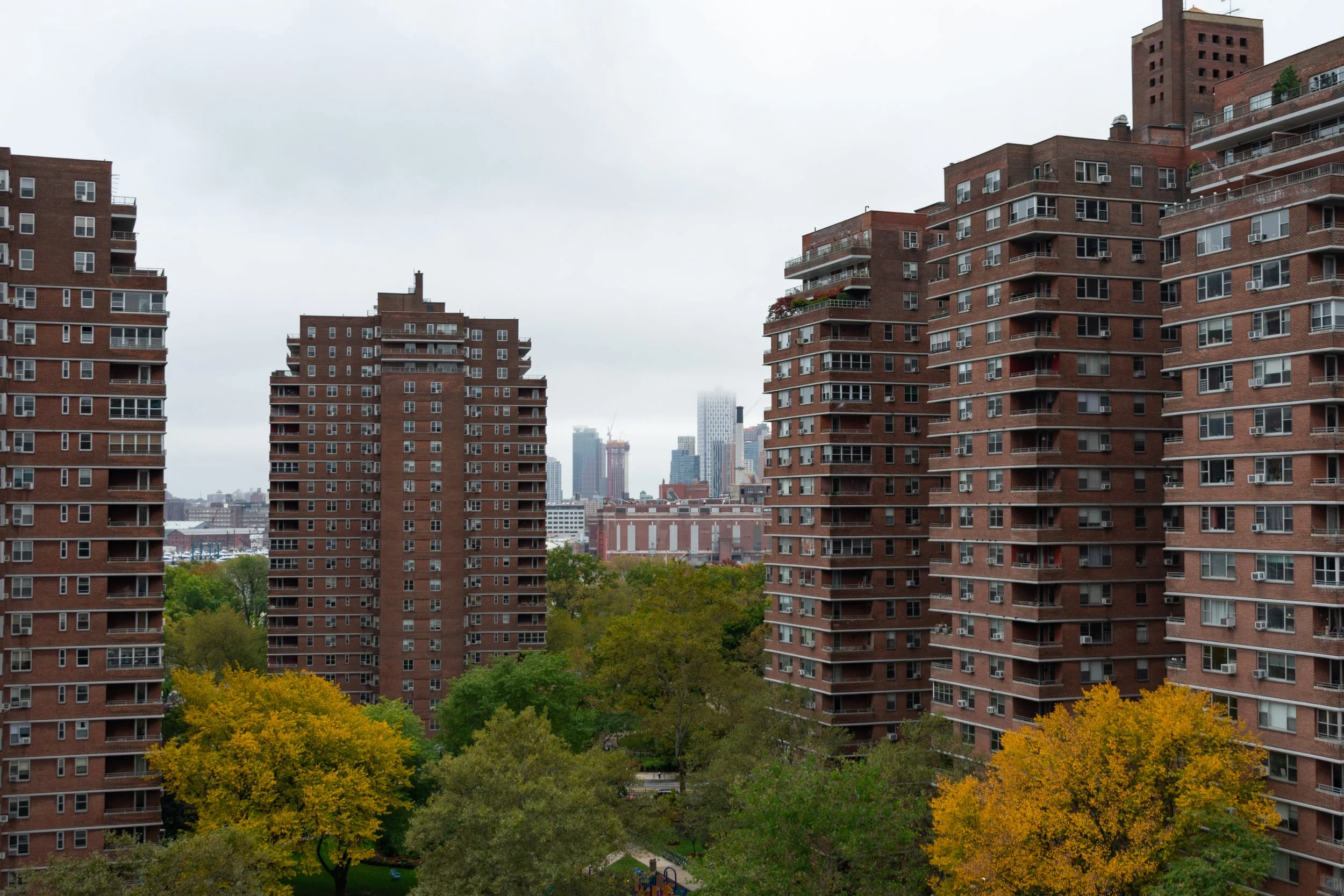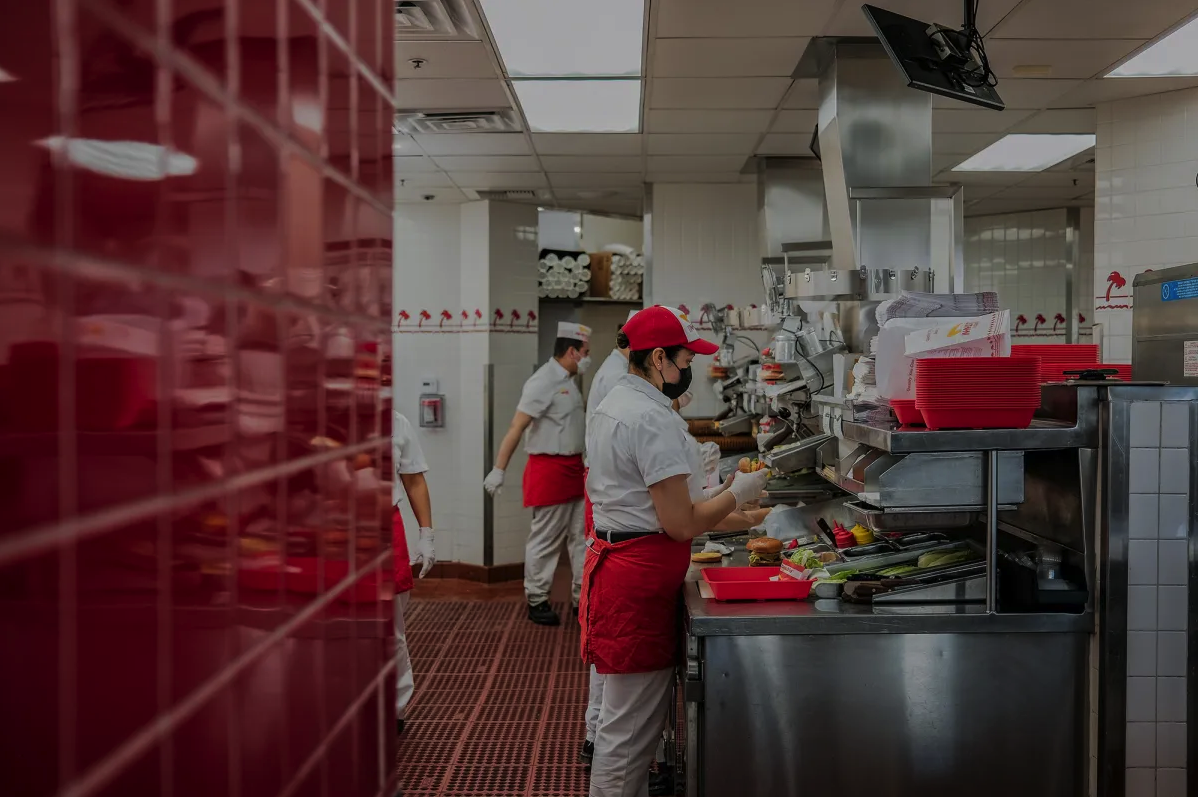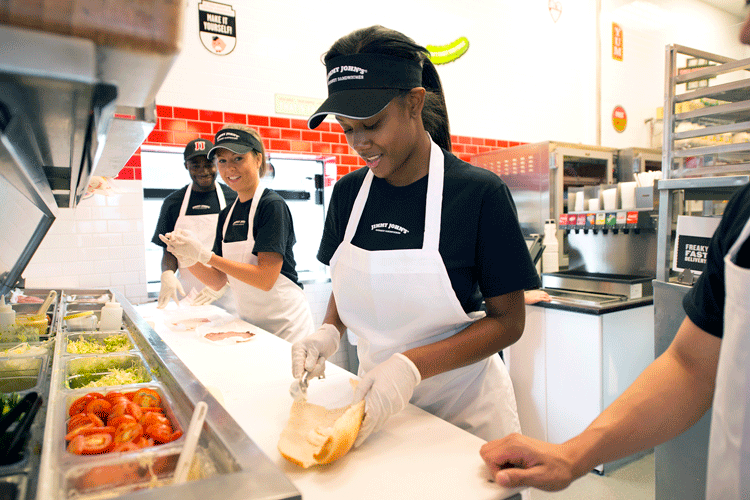Since its passage nearly a year ago, California’s fast-food minimum wage has increased wages for workers by 8-9%, finds a new analysis from Michael Reich + coauthors at UC Berkeley’s Center for Wage and Employment Dynamics. Check out this article from Axios to learn more about the study’s results.
Michael Reich on California’s minimum wage increase in CalMatters
The minimum wage for California’s fast food workers increased to $20/hour, with many critics predicting that firms will respond with mass layoffs and price increases. In this CalMatters article, Michael Reich unpacks the evidence against these predictions and explains how monopsony power has allowed firms to set artificially low wages.
Michael Reich in Berkeley News
“A minimum wage increase doesn’t kill jobs,” says Michael Reich. A new article from Berkeley News highlights a recent working paper by Reich and coauthors at IRLE on the impact of minimum wage laws on small businesses, which finds that higher wages eases employee recruitment and retention. Read the news piece here, and check out the full working paper.
Research in Review: The Minimum Wage
Michael Reich on State Minimum Wage Increases
In CNN, Michael Reich discusses recent state minimum wage increases in the context of existing high inflation, suggesting that recent minimum wage increases will not necessarily result in dramatic increases in prices and labor costs in low-wage sectors. Read more here.
Michael Reich on the California Living Wage Act
A new Opinion piece published in the Los Angeles Times cites research from affiliate Michael Reich on the California Living Wage Act to substantiate calls for a minimum wage increase. Reich found that the Act would have a negligible contribution to inflation – but as the measure failed to qualify for the 2022 ballot, LA Times author Isaac Lozano suggests a wage increase is in the hands of the state legislature. Read the article here.
The Impacts of Raising the Minimum Wage
Can a higher minimum wage reduce “deaths of despair?” And who benefits most when the minimum wage goes up?
Michael Reich has spent much of his career researching how minimum wage policies impact low-income Americans. His work has changed policy, having been cited by former President Barack Obama in a State of the Union speech and contributing to labor reforms across the country. Most recently, he helped advise New York City in regulating how Lyft and Uber drivers should be paid.
Over the past year, Professor Reich has co-authored two new studies examining how minimum wage policies affect specific groups of low-income Americans. One report, co-written with UC Berkeley colleagues William Dow, Anna Godoey and Christopher Lowenstein, asks whether increases in the minimum wage and the Earned Income Tax Credit (EITC) can reduce the numbers of “deaths of despair” – from alcohol, drugs or suicide – among low-wage workers. The team found that higher minimum wages do in fact lower deaths from alcohol and suicide but do not lower the number of drug-related deaths. The study also found that a higher EITC does not significantly reduce deaths of despair as much as minimum wage increases do.
Another study with Godoey examined how increasing the minimum wage to a $15 an hour level impacts low-wage workers at sub-state levels such as counties. The study didn’t just look at the effect of an increase in the absolute wage rate, but also at the effect of raising the relative minimum wage, or how the minimum wage in an area compared to its median wage. The report found that higher minimum wage levels, even in low-wage areas, don’t raise unemployment among low-wage workers even when the relative minimum wage was above 80%. The study also found that those who benefitted the most from increasing the minimum were less-educated workers living in areas with high relative minimum wages – in general, poorer regions with lower overall incomes.
These studies are particularly timely, as momentum has grown around efforts to raise the federal minimum wage to $15, and with nearly all of the 2020 Democratic presidential candidates supporting such an increase. They also build upon a long and influential body of research on the minimum wage coming out of UC Berkeley, from David Card’s widely-cited work to Claire Montialoux and Ellora Derenoncourt’s more recent contributions on the role of the minimum wage to promote racial equity.
In February, the Opportunity Lab discussed some of this recent work on the minimum wage with Professor Reich at the Institute for Research on Labor and Employment (IRLE), where he serves as the co-chair. Here is an edited record of that interview.
What are the innovations of your latest research on relative minimum wage increases?
Michael Reich: I’ve been studying low-wage labor markets for most of my career. My past work with other co-authors has been influential in turning around the academic community, the economics community, on the effects of the minimum wage on unemployment and showing in a more rigorous way than any before that the moderate minimum wages we had in effect through the 2000s and the policies since then have not really had a significant effect on unemployment. Theory tells us that minimum wage increases should hurt the number of jobs, but that’s a very incomplete model partly because there are all kinds of frictions in labor markets - the cost of hiring people, the cost of employers and employees looking for a good match. We want to look for the effects of a policy on a whole economy and not just in one labor market. People are mainly affected by the minimum wage in just a few industries - restaurants, retail, childcare, elder care, janitors; there can be adjustments in prices in those industries. If the price in restaurants goes up a little bit, you would not expect jobs to have to disappear. Heads of lots of burger companies have said, “I would rather sell more hamburgers than fewer. If I have more workers I can sell more burgers.”
Laws raising the minimum wage to $13 go much higher than what previous research has looked at, so in our paper on minimum wage effects in low-wage areas, we were concerned with saying what happened when the relative minimum wage is much higher than what we’re used to, not 35% or 40% but 50%, 60% even 80%. If the minimum wage went up to $15 federally in the whole U.S., which was the bill the House (of Representatives) passed, then the ratio of the minimum wage to the median wage would be 80% in Alabama. That sounds scary to many people including economists. How could an economy withstand such a policy effect without a negative effect on employment? We looked at sub-state levels and what we found is that when we just looked at the counties where the ratio of minimum wage to median wage was 83%, the highest quartile of the most affected counties, the minimum wage did not have an effect on unemployment.
“Even in counties – not just in Mississippi or Alabama but some in Fresno or rural parts of many states – where the minimum wage relative to the median wage was 80%, it did not have a negative effect on employment
The big take-away is that even in counties – not just in Mississippi or Alabama but some in Fresno or rural parts of many states - even when the minimum wage relative to the median wage was 80%, it did not have a negative effect on employment.
There are other effects besides the employment effect. One of the outcomes we look at is child poverty and we find that an increase in the minimum wage has a big effect on child poverty and that’s as important as whether it has an effect on jobs.
How has the low wage labor market changed?
Reich: The federal minimum wage is still stuck at $7.25 where it’s been for 11 years. That’s a decline of 30% in real terms. That’s pretty shocking to have a minimum wage that goes down over time in real terms. On other hand, 24 or 25 states are raising the minimum wage above the federal level and in some states, cities can do that as well. In California, it’s over two dozen cities. The cities are showing the way, showing it’s possible. The sky didn’t fall and that gives more courage to state level policymakers and same with the state to the feds.
How has the labor market changed over time? Over 10 and 20 years, it’s changed from being much less a youth market, so the stereotype that many opponents have is that most minimum wage workers are young people in high school, in their first job, gaining skills and discipline and you don’t want to discourage that by raising the minimum wage but in fact the composition of the low wage labor force has changed. Ninety percent of low wage workers are now over 25, quite a few are women and quite a few have children. It means that the importance of raising the minimum wage is greater for families and for their children.
Are there any reasons behind the changing demographics of minimum wage workers?
Reich: My sense is there’s a decline in the real value of the minimum wage. People are more desperate, adults are more desperate and need to take jobs. Something like 10% to 20% of the fast food work force have college degrees. On the other side, with teens, they’re staying in school longer so they’re not taking jobs after school. They are going to summer programs so there’s been a real fast decline in teen employment.
What about Uber drivers and others working in the gig economy? How much are they earning in relation to the minimum wage?
Reich: We found that drivers in New York City, quite a few working full time are making less than the minimum wage. They’re making more like $12 an hour after expenses. There’s just a lot of people willing to work for less because they’re desperate.
Do minimum wage increases impact people earning just above the minimum wage?
Reich: When the minimum wage goes up, we do see increases in pay for people who are above the new minimum because you want to keep some equity. If you’re an assistant manager of a fast food store and you’re paid $15.50 an hour and the new employee gets $15, the employer will want to raise your pay to keep some kind of equity because you’ve been there a while. That effect tends to evaporate just a couple of dollars above the new minimum wage but it still has an effect on reducing wage inequality.
What were the advantages of using more localized data in your study?
Reich: In each state, there are well-off and less well-off counties. There’s a big difference between Fresno and San Francisco in minimum wages. In most states, there’s one minimum wage in the entire state so this gave us more variation to work with. Particularly, all states that don’t go above $7.25, they weren’t playing a role in other people’s studies because there was no minimum wage change there but because we were using the ratio (of minimum wage to median wage), which is affected by the median wage, we could exploit the variation that existed, say, between Philadelphia and rural Alabama.
The second study taps into the larger question of rising death rates in the U.S. What is the impact of the EITC or minimum wage on that?
“Ninety percent of low wage workers are now over 25, quite a few are women and quite a few have children. It means that the importance of raising the minimum wage is greater for families and for their children
Reich: Deaths of despair just cried out to be looked at because of public awareness of how U.S. life expectancy rates are in decline and the big jumps in death rates especially among mid-wage people and not just in rural areas. The longer-term outcome is wages haven’t been rising very much for men.
They’ve been rising for women but not enough. Our question isn’t as much ‘What’s causing deaths of despair but what can we do about them?’
We found really positive effects of both the minimum wage and the EITC on reducing suicides especially among women. We did not find many effects on drug overdoses. We used many tests to make sure we’re looking at causal effect and not correlation.
What are some of the key policy implications of this research?
Reich: Minimum wage is not a panacea. Housing costs are rising really fast. The minimum wage isn’t going to have an impact on that. When the labor market is tight anyways and there’s any loss of jobs and immigrants are being scared away to work in restaurants or landscaping or construction, I would think the minimum wage isn’t so binding. Many restaurant workers are paid well above the minimum wage because employers have to keep people.
The big policy context is that there are many states that have passed high minimum wage laws, that Democrats are pretty united among presidential candidates to raise the minimum wage from $7.25 to $15 but that would be phased in over 15 years. The entry level wage is higher in many places than the minimum wage. The entry level wage is well above the $7.25 minimum wage, more like $9 for very recent high school grads. So the jump to $15, if it was phased in and starting from an entry level wage, is not all that steep as a lot of people think and it does have these positive effects including on health. It’s an issue that the Democrats and Republicans are divided on and it’s going to come up as an issue in the fall and it’s on the ballot in Florida, where there’s an initiative to go to $15. We’re concerned about inequality, and the minimum wage is the most effective tool in terms of the number of people who are covered.
“We’re concerned about inequality, and the minimum wage is the most effective tool [for reducing it] in terms of the number of people who are covered.








